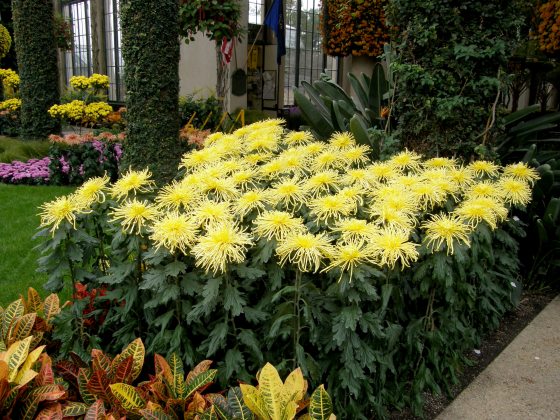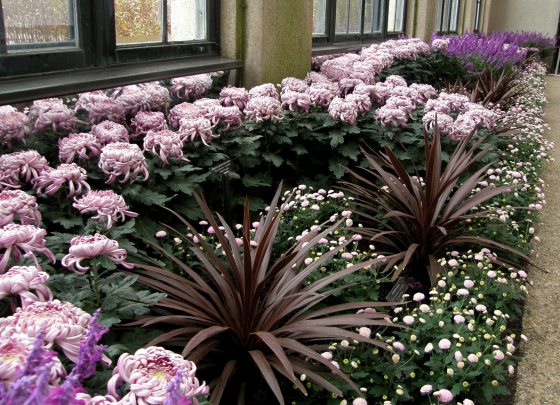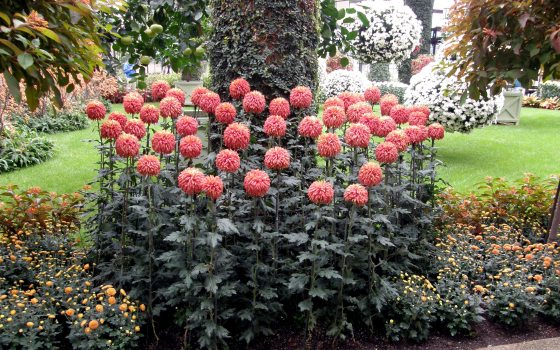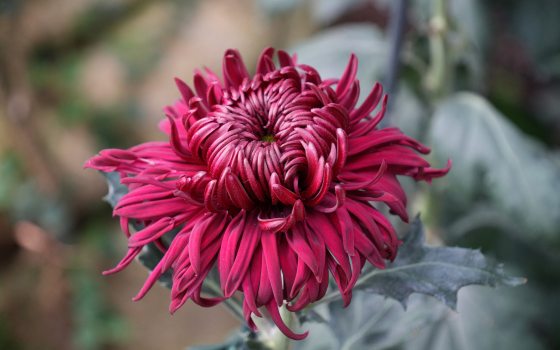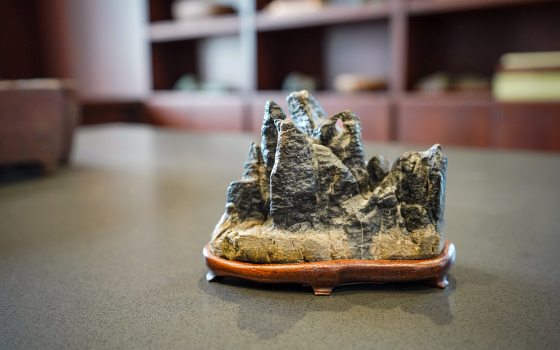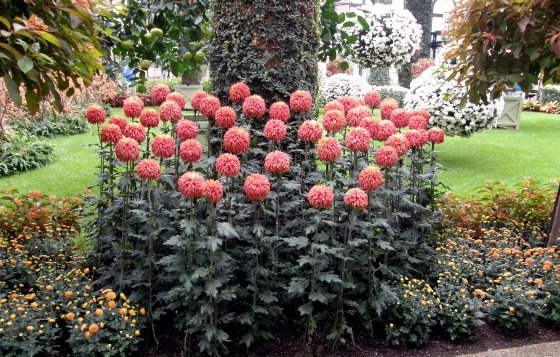
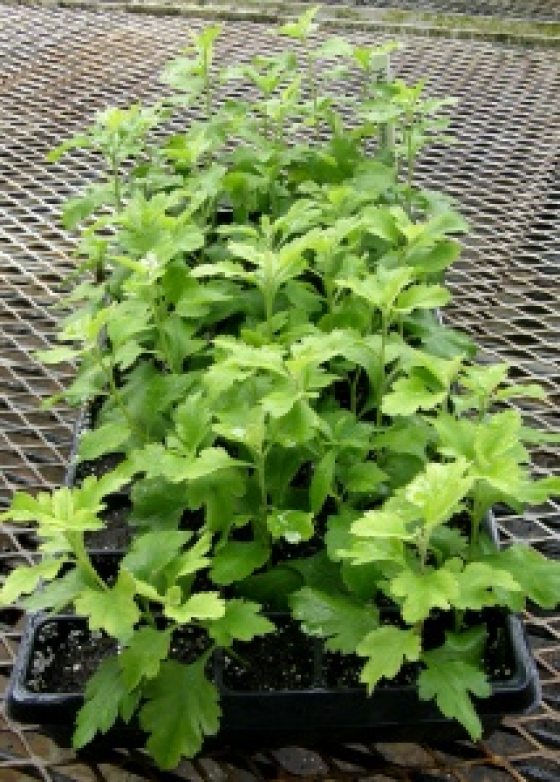

The tall, single-stemmed chrysanthemums you see in the Conservatory here at Longwood Gardens are quite different than the mounded shrubs loaded with small flowers that you find at your local garden center. These are a specialty florist type and the product of hundreds of years of breeding, so they are able to reach stately heights and flower sizes. Additionally, they are not winter hardy for us in Southeast Pennsylvania.
The first thing to know about chrysanthemums is that they flower when day length is shorter than 12 hours. This happens naturally as we get closer to autumn. So the earlier we start our plants in the greenhouse, the more time the mum has to put on green vegetative growth before setting flower. The tallest of the single-stem mums at Longwood are ordered in as rooted cuttings, or started from cuttings of our stock plants in early June. The shorter we want the single stems to finish, the later in the summer they are started. Our shortest single stems are started in early August.
As the mum grows, a side branch will grow at every point where a new leaf forms. All summer we remove the side branches, a process that happens at least every two weeks to ensure that they don’t rob energy from the main stem. With almost 3,000 single-stems to care for, by the time we get through all of them it’s time to start at the beginning again! Finally in late September a cluster of flowers starts to form at the top of the stem. At this point, side buds are removed so that all of the plant’s energy goes into forming one large flower instead of several smaller ones. The size of this final flower depends on the type of chrysanthemum. We have some incurve varieties that can produce huge flowers the size of your head!
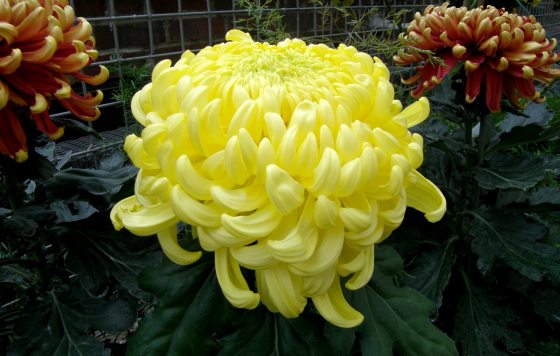
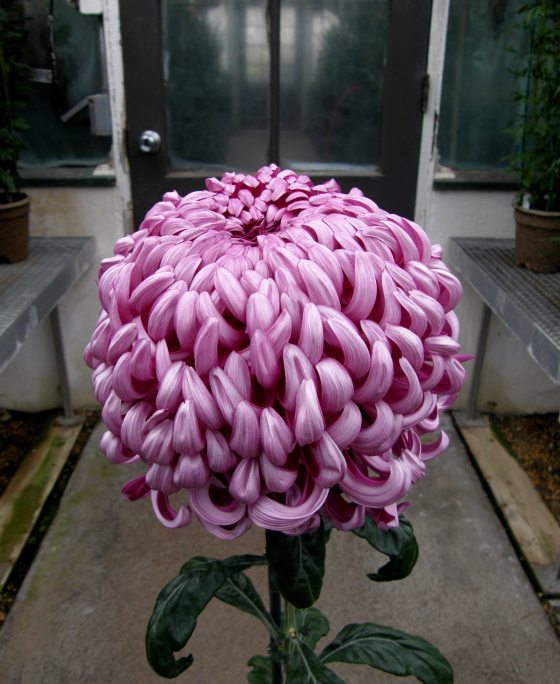
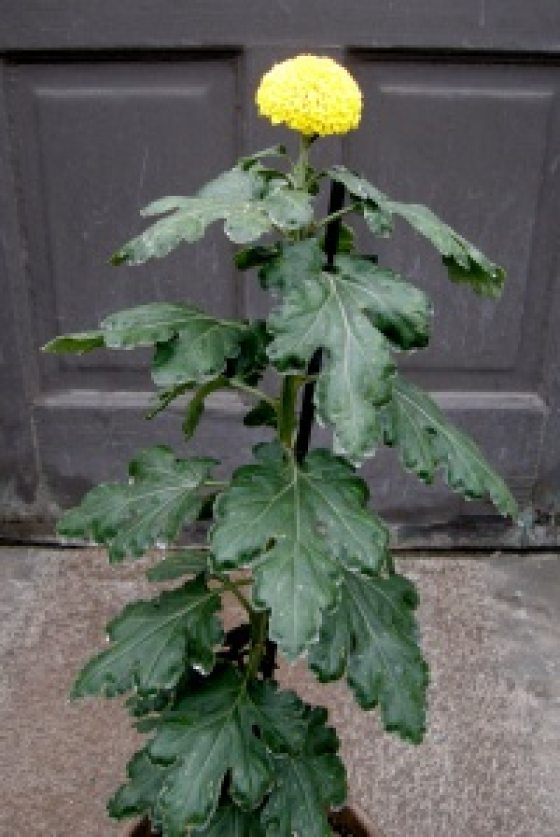
In contrast, even with removing all of the side blooms, pompon chrysanthemums produce one tiny flower at the top of the stem. With these it is best to let the plant do its own thing and end up with hundreds of smaller beautiful flowers. This is also true with most garden mums.
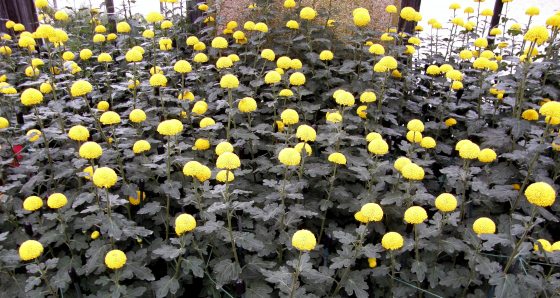
By the end of October, our greenhouses are full of bright oranges, yellows, purples, and reds. The single-stems are ready for our Conservatory staff to plant in perfect rows for all to enjoy!
